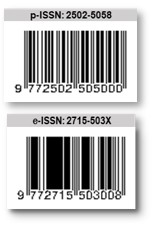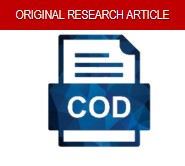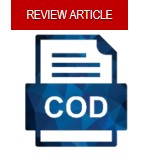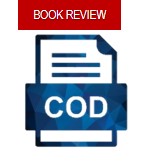Can Electronic Evidence Constitute Sufficient Grounds for Criminal Liability?
DOI:
https://doi.org/10.46924/jihk.v7i1.323Keywords:
Legality, Law of Evidence, Electronic Evidence, Indonesian Legal SystemAbstract
The advancement of information technology has triggered a paradigm shift in the evidentiary system of criminal law, particularly concerning the legality and authenticity of electronic evidence. This study seeks to examine the legal standing of electronic evidence within the Indonesian criminal procedure framework, assess the impact of Constitutional Court Decision No. 20/PUU-XIV/2016, and evaluate the admissibility of such evidence in light of evidentiary principles and the role of digital forensics. Employing a normative juridical approach, the analysis is based on statutory regulations, judicial decisions, and relevant legal scholarship. The findings reveal that while electronic evidence has been formally acknowledged through the Electronic Information and Transactions (ITE) Law and reinforced by the Constitutional Court’s decision, significant challenges persist in both its technical implementation and legal admissibility in court proceedings. Digital forensics plays a critical role in safeguarding the integrity and reliability of electronic evidence. The study concludes that reforming the Indonesian Criminal Procedure Code and developing standardized digital evidence protocols are essential to ensuring justice and legal certainty.
Downloads
References
Journals
Astuti, Sri Ayu. “Perluasan Penggunaan Bukti Elektronik (Evidence of Electronic) Terkait Ketentuan Alat Bukti Sah Atas Perbuatan Pidana Di Ruang Mayantara (Cyberspace).” Pagaruyuang Law Journal 1, no. 1 (2017): 44–57. https://doi.org/10.31869/plj.v1i1.269.
Dewantara, Dewa Made Doni, and I Dewa Made Suartha. “Legalitas Alat Bukti Elektronik Sebagai Alat Bukti Dalam Hukum Acara Pidana.” Kertha Desa 10, no. 8 (2022): 660–69. https://ojs.unud.ac.id/index.php/kerthadesa/article/view/89360.
Gunawan, Tri Agus, and Indira Swasti Gama Bhakti. “Makna Perluasan Alat Bukti Elektronik: Analisis Putusan Mahkamah Konstitusi Nomor 20/PUU-XIV/2016.” Literasi Hukum 6, no. 2 (2022): 105–16. https://doi.org/10.31002/lh.v6i2.6810.
Lakada, Daniel David Julio. “Perkembangan Pengaturan Alat Bukti Elektronik Dalam Hukum Acara Pidana: Kajian Hukum Tentang Cyber Crime.” Lex Crimen 12, no. 5 (2024): 1–11. https://ejournal.unsrat.ac.id/v3/index.php/lexcrimen/article/view/59171.
Manurung, Theresia Octaviani, and I Gusti Ayu Agung Ari Krisnawati. “Kedudukan Alat Bukti Elektronik Dalam Sistem Pembuktian Perkara Pidana Di Indonesia.” Kertha Desa 10, no. 5 (2022): 371–81. https://ojs.unud.ac.id/index.php/kerthadesa/article/view/79114.
Nafatilopa, Princes Elsa, and Tomy Michael. “Legalitas Alat Bukti Elektronik Dalam Pembuktian Tindak Pidana Umum Pasca Putusan Mahkamah Konstitusi Nomor 20/PUU-XIV/2016.” Jurnal Sosial Humaniora Sigli 5, no. 2 (2022): 342–51. https://doi.org/10.47647/jsh.v5i2.1018.
Pramata, Aldho Galih. “Analisis Kekuatan Dan Nilai Pembuktian Alat Bukti Elektronik Berwujud CCTV (Closed Circuit Television) Pasca Putusan Mahkamah Konstitusi Nomor 20/PUU-XIV/2016 Dalam Hukum Acara Pidana.” Jurnal Verstek 8, no. 3 (2020): 392–400. https://doi.org/10.20961/jv.v8i3.47057.
Pratiwi, Feroca Mevihanna Noor, and Sri Wahyuningsih Yulianti. “Penilaian Kekuatan Alat Bukti Elektronik Dalam Pembuktian Tindak Pidana Penyebarluasan Konten Pornografi Melalui Media Sosial.” Jurnal Verstek 10, no. 1 (2022): 59–67. https://doi.org/10.20961/jv.v10i1.63940.
Pribadi, Insan. “Legalitas Alat Bukti Elektronik Dalam Sistem Peradilan Pidana.” Lex Renaissance 3, no. 1 (2019): 109–24. https://doi.org/10.20885/JLR.vol3.iss1.art4.
Ramiyanto, Ramiyanto. “Bukti Elektronik Sebagai Alat Bukti Yang Sah Dalam Hukum Acara Pidana.” Jurnal Hukum Dan Peradilan 6, no. 3 (2017): 463–84. https://doi.org/10.25216/jhp.6.3.2017.463-484.
Utami, Dinda Puspita Tri, and Muhammad Ridwan Lubis. “Legalitas Rekaman Elektronik Sebagai Alat Bukti Dalam Tindak Pidana Pencucian Uang Studi Di Pengadilan Negeri Medan.” Kalam Keadilan 10, no. 2 (2022): 334–42. http://siakad.univamedan.ac.id/ojs/index.php/kalam-keadilan/article/view/365.
Wirawan, I Made, Oheo K. Haris, and Handrawan Handrawan. “Legalitas Perluasan Penggunaan Alat Bukti Elektronik Dalam Penegakan Hukum Pidana Indonesia.” Halu Oleo Legal Research 2, no. 1 (2020): 75–85. http://dx.doi.org/10.33772/holresch.v2i1.10604.
Books
Alfitra, Alfitra. Hukum Pembuktian Dalam Beracara Pidana, Perdata Dan Korupsi Di Indonesia. Jakarta: Asser, 2014.
Imron, Ali, and Muhamad Iqbal. Hukum Pembuktian. Tangerang Selatan: Unpam Press, 2019.
Shinder, Debra Littlejohn, and Michael Cross. Scene of the Cybercrime. Oxford: Syngress, 2008.
Subekti, R. Hukum Pembuktian. 16th ed. Jakarta: Pradnya Paramita, 2007.
Downloads
Published
Issue
Section
License
Copyright (c) 2025 Atang Suryana, Marius Suprianto Sakmaf

This work is licensed under a Creative Commons Attribution 4.0 International License.
Authors who publish with this journal agree to the following terms:
- Copyright on any article is retained by the author(s).
- The author grants the journal, the right of first publication with the work simultaneously licensed under a Creative Commons Attribution License that allows others to share the work with an acknowledgment of the work’s authorship and initial publication in this journal.
- Authors are able to enter into separate, additional contractual arrangements for the non-exclusive distribution of the journal’s published version of the work (e.g., post it to an institutional repository or publish it in a book), with an acknowledgment of its initial publication in this journal.
- Authors are permitted and encouraged to post their work online (e.g., in institutional repositories or on their website) prior to and during the submission process, as it can lead to productive exchanges, as well as earlier and greater citation of published work.
- The article and any associated published material is distributed under the Creative Commons Attribution 4.0 International License



 Sinta ID:
Sinta ID: 


















